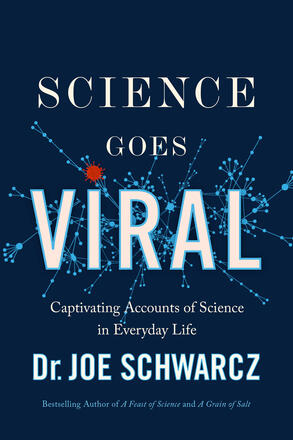
Science Goes Viral
Captivating Accounts of Science in Everyday Life
La description
Dr. Joe provides a framework for coming to grips with the onslaught of COVID-19 information and misinformation. He reminds us that although our daily activities have been hijacked by the pandemic, life does go on. He delves into COVID-19-related science and distracts us with an array of topics such as essential oils, plant protein, and omega-3.
Reviews
“Dr. Joe is at his best in this trip through history, science, and communicable disease, and in plain language helps us understand the dimensions of the COVID-19 pandemic. ” — Hon. Kelvin K. Ogilvie, CM, Chemist and Canadian Senator (2009–2017)
“To all the people who feel that science is a dry and boring affair, this book will be an eye-opener. Joe Schwarcz has a great talent for turning science into amusing and entertaining, yet informative and easy-to-understand stories. It is, I think, impossible not to be fascinated by this terrific book. ” — Edzard Ernst, Emeritus Professor of Complementary Medicine, University of Exeter
“Joe Schwarcz does it again with this fun, fast-paced, and evidence-informed exploration of the hot topics in science we’ve been bombarded with over the past few years! From the biology of vaccines (including the new mRNA variety) and immune boosting (spoiler: you can’t) to the history of epidemiology and toilet paper, Schwarcz gives us the fact-filled low-down. In a world filled with misinformation and twisted science, this is a must-read!” — Timothy Caulfield, Canada Research Chair in Health Law and Policy, bestselling author of Is Gwyneth Paltrow Wrong About Everything?
“It is full of interesting information solidly based in science. If you read it, you will learn. You will laugh. You will be smarter. You will do better in trivia contests. ” — Science-Based Medicine